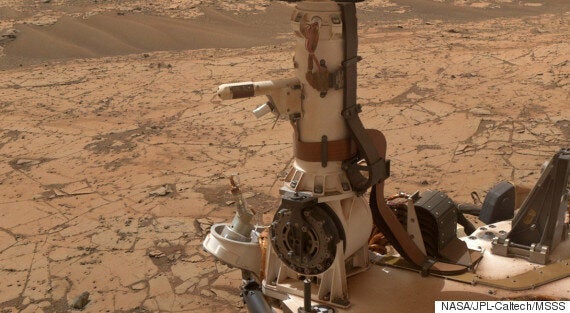Scientists believe they have enough evidence from the Curiosity rover to say that water does exist below the surface of Mars.
After a year of collecting atmospheric data from NASA's Curiosity rover, scientists believe that if water is present below the surface it would be in the form of brine.

It was originally believed that Mars' surface temperature was simply too cold at night for liquid to exist on the surface. However thanks to the discovery that Martian soil contains a type of salt, it's now believed that the salt -- when mixed with the water -- would create a brine-like solution that wouldn't freeze during the martian nights.
Javier Martin-Torres of the Spanish Research Council, Spain is lead author of the report and while he won't acknowledge the possibility for life, he's confident that it could have major implications for the presence of organic material in general.
"Liquid water is a requirement for life as we know it, and a target for Mars exploration missions, conditions near the surface of present-day Mars are hardly favourable for microbial life as we know it, but the possibility for liquid brines on Mars has wider implications for habitability and geological water-related processes."
READ MORE:
It's important to point out that scientists have not discovered water on Mars, instead they've simply found a scientifically sound method for water to remain in its liquid state.
Curiosity rover has been exploring the Gale crater where the team have found perchlorate salts. These salts are capable of absorbing liquid when Mars' humidity reaches above a certain threshold.
Alfred McEwen, principle investigator on Curiosity's HiRISE camera believes that while their success in finding water in the Gale crater hasn't been great, it actually bodes well for the rest of the planet.
"Gale Crater is one of the least likely places on Mars to have conditions for brines to form, compared to sites at higher latitudes or with more shading. So if brines can exist there, that strengthens the case they could form and persist even longer at many other locations, perhaps enough to explain RSL activity,"